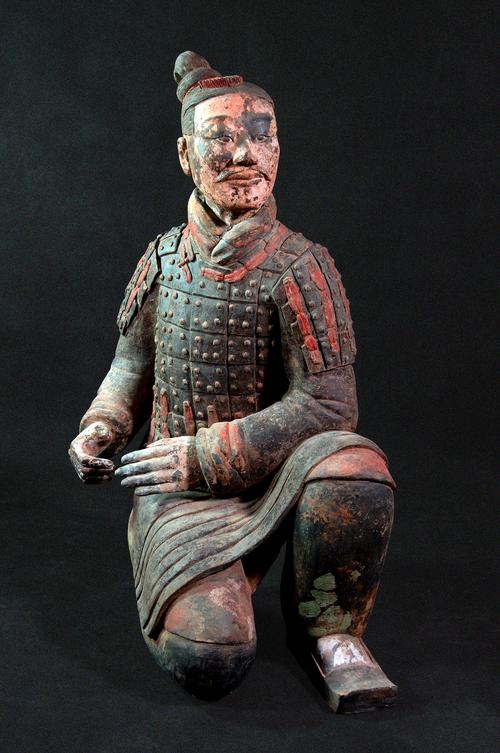
Were the Terracotta Warriors Glazed?
The Terracotta Army, a vast collection of life-sized terracotta sculptures depicting the armies of Qin Shi Huang, the first emperor of China, is renowned for its intricate craftsmanship and sheer scale. While the warriors themselves are impressive, the question of their original appearance often arises. Were these figures, now predominantly earthenware in appearance, ever adorned with color? The answer, unequivocally, is yes.
A Spectrum of Colors: The Polychrome Reality of the Terracotta Army
Though centuries buried underground have stripped the warriors of their vibrant hues, archaeological evidence and meticulous research have unveiled the colorful reality of the Terracotta Army. The figures were originally painted in a dazzling array of pigments, transforming the army into a breathtaking spectacle of color and detail.
The Glazing Process: A Protective Layer for Vibrant Hues
Before the application of pigments, the warriors underwent a crucial step: glazing. This process involved coating the fired clay figures with a thin layer of liquid clay, known as slip. This slip, often transparent or slightly tinted, served several purposes:
- Sealing: The glaze acted as a sealant, preventing moisture from penetrating the porous terracotta and causing damage.
- Surface Preparation: The glaze created a smooth surface for the subsequent application of pigments, enhancing their adhesion and vibrancy.
- Enhancing Colors: The glaze itself could be tinted, adding a subtle base color or influencing the final hue of the applied pigments.
Ten Thousand Faces, Each One Unique
The level of detail lavished on the Terracotta Army extends beyond their clothing and weaponry to their faces. Ten different molds were used to create the basic facial structure of the warriors. However, artisans didn't stop there. They meticulously personalized each face by adding clay details. This personalized touch involved shaping individual features like noses, eyes, mouths, and ears, resulting in an army of thousands with unique faces.
The Palette of the Past: Reconstructing the Lost Colors
While only traces of pigment remain today, researchers have been able to identify the palette used by the Qin artisans. These colors, derived from both natural minerals and synthetic compounds, included:
- Red: From cinnabar, a mercury sulfide mineral, used for details on clothing and weaponry.
- Blue: From azurite, a copper carbonate mineral, used for robes and banners.
- Green: From malachite, another copper carbonate mineral, used for clothing and decorative elements.
- Purple: From a combination of red and blue pigments, possibly indicating high rank.
- Black: From charcoal or manganese oxide, used for hair, eyes, and weaponry.
- White: From crushed shells or white clay, used for the whites of eyes and base layers.
The Fading Glory: Factors Contributing to Color Loss
The vibrant colors that once adorned the Terracotta Army have largely faded due to a combination of factors:
- Exposure to Air: Upon excavation, the sudden exposure to air caused the pigments to oxidize and deteriorate rapidly.
- Humidity and Temperature Fluctuations: The varying humidity and temperature within the burial pits contributed to the breakdown of pigments.
- Biological Activity: Microorganisms present in the soil also played a role in the degradation of the organic components of the pigments.
Preserving the Past: Modern Conservation Efforts
Today, conservationists are working diligently to preserve the remaining traces of pigment on the Terracotta Army. This involves careful climate control within the museum, the use of specialized preservation techniques, and ongoing research into new methods for stabilizing and protecting the delicate pigments.
FAQs
Were the Terracotta Warriors painted?
Yes, the Terracotta Warriors were originally painted in a variety of bright colors, including red, blue, green, purple, black, and white.
Why did the paint on the Terracotta Warriors fade?
The paint faded due to exposure to air, humidity, temperature fluctuations, and biological activity after the warriors were unearthed.
Are there any efforts being made to restore the original colors of the Terracotta Army?
While restoring the original colors is a complex challenge, conservationists are actively working to preserve the remaining traces of pigment and are exploring potential future restoration techniques.